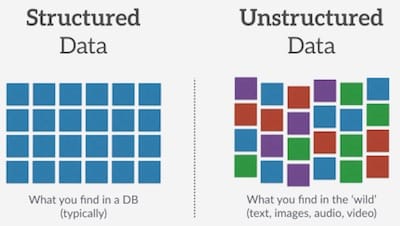

TensorFlow 2 中文文档 - 特征工程结构化数据分类
source link: https://geektutu.com/post/tf2doc-ml-basic-structured-data.html
Go to the source link to view the article. You can view the picture content, updated content and better typesetting reading experience. If the link is broken, please click the button below to view the snapshot at that time.

TensorFlow 2 中文文档 - 特征工程结构化数据分类
源代码/数据集已上传到 Github - tensorflow2-docs-zh

TF2.0 TensorFlow 2 / 2.0 中文文档 - 结构化数据分类 Classify structured data
主要内容:介绍如何对结构化数据(例如 CSV 中的表格数据)分类。
这个教程包含完整的代码:
- 使用 Pandas 加载 CSV 文件。
- 使用 tf.data 打乱数据并获取batch。
- 使用特征工程(feature columns)将 CSV 中的列映射为特征值(features)
- 使用 Keras 搭建、训练和评估模型。
数据集由 Cleveland Clinic Foundation 提供的几百行心脏病数据构成。每一行代表一个病人,每一列描述一个属性,数据共14列,最后一列为是否患病。我们将使用这些信息预测一个病人是否有心脏病。这是一个典型的二分分类问题。
列 描述 特征类型 数据类型
Age 年龄 数值 integer
Sex 性别(1男性; 0女性) 类别 integer
… … … …
Thal 3 = normal; 6 = fixed defect; 7 = reversable defect 类别 string
Target 是否感染,(1是;0否) 分类 integer
pip install -q sklearn
pip install -q tensorflow==2.0.0-beta1
import numpy as np
import pandas as pd
import tensorflow as tf
from tensorflow import feature_column
from tensorflow.keras import layers
from sklearn.model_selection import train_test_split
使用 Pandas 读取数据
URL = 'https://storage.googleapis.com/applied-dl/heart.csv'
dataframe = pd.read_csv(URL)
dataframe.head()
- age sex cp … slope ca thal target
0 63 1 1
3 0 fixed 0
1 67 1 4
2 3 normal 1
2 67 1 4
2 2 reversible 0
3 37 1 3
3 0 normal 0
4 41 0 2
1 0 normal 0
分割训练集、验证集和测试集
train, test = train_test_split(dataframe, test_size=0.2)
train, val = train_test_split(train, test_size=0.2)
print(len(train), 'train examples') # 193
print(len(val), 'validation examples') # 49
print(len(test), 'test examples') # 61
创建 input pipeline
使用 tf.data ,我们可以使用特征工程(feature columns)将 Pandas DataFrame 中的列映射为特征值(features)。如果是一个非常大的 CSV 文件,不能直接放在内存中,就必须直接使用 tf.data 从磁盘中直接读取数据了。
# 帮助函数,返回 tf.data 数据集。
def df_to_dataset(dataframe, shuffle=True, batch_size=32):
dataframe = dataframe.copy()
labels = dataframe.pop('target')
ds = tf.data.Dataset.from_tensor_slices((dict(dataframe), labels))
if shuffle:
ds = ds.shuffle(buffer_size=len(dataframe))
ds = ds.batch(batch_size)
return ds
batch_size = 5 # 为了方面展示下面的示例,batch暂时设置为5。
train_ds = df_to_dataset(train, batch_size=batch_size)
val_ds = df_to_dataset(val, shuffle=False, batch_size=batch_size)
test_ds = df_to_dataset(test, shuffle=False, batch_size=batch_size)
理解 input pipeline
for feature_batch, label_batch in train_ds.take(1):
print('Every feature:', list(feature_batch.keys()))
print('A batch of ages:', feature_batch['age'])
print('A batch of targets:', label_batch )
Every feature: ['cp', 'age', 'sex', ... , 'slope', 'ca']
A batch of ages: tf.Tensor([50 62 37 69 58], shape=(5,), dtype=int32)
A batch of targets: tf.Tensor([0 0 0 0 0], shape=(5,), dtype=int32)
可以看到数据集返回了一个键为列名的字典。
特征列示例
TensorFlow 提供了很多种类型的特征列(feature column),接下来给几个例子看一看每一列的值是怎么被转换的。
example_batch = next(iter(train_ds))[0]
# 帮助函数:创建一个特征列,并转换。
def demo(feature_column):
feature_layer = layers.DenseFeatures(feature_column)
print(feature_layer(example_batch).numpy())
1) Numeric column
特征列的输出是模型的输入,Numeric columns 是最简单的类型,数值本身代表某个特征真实的值,因此转换后,值不发生改变。
age = feature_column.numeric_column("age")
demo(age)
[[50.]
[62.]
[37.]
[69.]
[58.]]
在这个数据集中,大部分列都是数值类型。
2) Bucketized columns
有时候,并不想直接将数值传给模型,而是希望基于数值的范围离散成几个种类。比如人的年龄,0-10归为一类,用0表示;11-20归为一类,用1表示。我们可以用 bucketized column 将年龄划分到不同的 bucket 中。用中文比喻,就好像提供了不同的桶,在某一范围内的扔进A桶,另一范围的数据扔进B桶,以此类推。下面的例子使用独热编码来表示不同的 bucket。
age_buckets = feature_column.bucketized_column(age, boundaries=[18, 25, 30, 35, 40, 45, 50, 55, 60, 65])
demo(age_buckets)
[[0. 0. 0. 0. 0. 0. 0. 1. 0. 0. 0.]
[0. 0. 0. 0. 0. 0. 0. 0. 0. 1. 0.]
[0. 0. 0. 0. 1. 0. 0. 0. 0. 0. 0.]
[0. 0. 0. 0. 0. 0. 0. 0. 0. 0. 1.]
[0. 0. 0. 0. 0. 0. 0. 0. 1. 0. 0.]]
3) Categorical columns
在这个数据集中,thal列使用字符串表示(e.g. ‘fixed’, ‘normal’, ‘reversible’)。字符串不能直接传给模型。所以我们要先将字符串映射为数值。可以使用categorical_column_with_vocabulary_list 和 categorical_column_with_vocabulary_file 来转换,前者接受一个列表作为输入,后者可以传入一个文件。
thal = feature_column.categorical_column_with_vocabulary_list(
'thal', ['fixed', 'normal', 'reversible'])
thal_one_hot = feature_column.indicator_column(thal)
demo(thal_one_hot)
[[0. 1. 0.]
[0. 1. 0.]
[0. 1. 0.]
[0. 1. 0.]
[0. 0. 1.]]
可以看到,最终的输出向量也是独热编码,和 Bucketized column 相似。
4) Embedding column
假设某一列有上千种类别,用独热编码来表示就不太合适了。这时候,可以使用 embedding column。embedding column 可以压缩维度,因此向量中的值不再只由0或1组成,可以包含任何数字。
在有很多种类别时使用 embedding column 是最合适的。接下来只是一个示例,不管输入有多少种可能性,最终的输出向量定长为8。
# embedding column的输入是categorical column
thal_embedding = feature_column.embedding_column(thal, dimension=8)
demo(thal_embedding)
[[-0.42 -0.42 0.34 0.47 0.21 0.33 0.34 0.65]
[-0.42 -0.42 0.34 0.47 0.21 0.33 0.34 0.65]
[-0.42 -0.42 0.34 0.47 0.21 0.33 0.34 0.65]
[-0.42 -0.42 0.34 0.47 0.21 0.33 0.34 0.65]
[ 0.20 0.07 0.06 0.01 -0.47 -0.10 -0.70 0.00]]
5) Hashed feature columns
另一种表示类别很多的 categorical column 的方式是使用 categorical_column_with_hash_bucket。这个特征列会计算输入的哈希值,然后根据哈希值对字符串进行编码。哈希桶(bucket)个数即参数hash_bucket_size。哈希桶(hash_buckets)的个数应明显小于实际的类别个数,以节省空间。
注意:哈希的一大副作用是可能存在冲突,不同的字符串可能映射到相同的哈希桶中。不过,在某些数据集,这个方式还是非常有效的。
thal_hashed = feature_column.categorical_column_with_hash_bucket(
'thal', hash_bucket_size=1000)
demo(feature_column.indicator_column(thal_hashed))
[[0. 0. 0. ... 0. 0. 0.]
[0. 0. 0. ... 0. 0. 0.]
[0. 0. 0. ... 0. 0. 0.]
[0. 0. 0. ... 0. 0. 0.]
[0. 0. 0. ... 0. 0. 0.]]
6) Crossed feature columns
将几个特征组合成一个特征,即 feature crosses,模型可以对每一个特征组合学习独立的权重。接下来,我们将组合 age 和 thal 列创建一个新的特征。注意:crossed_column不会创建所有可能的组合,因为组合可能性会非常多。背后是通过hashed_column处理的,可以设置哈希桶的大小。
crossed_feature = feature_column.crossed_column([age_buckets, thal], hash_bucket_size=1000)
demo(feature_column.indicator_column(crossed_feature))
[[0. 0. 0. ... 0. 0. 0.]
[0. 0. 0. ... 0. 0. 0.]
[0. 0. 0. ... 0. 0. 0.]
[0. 0. 0. ... 0. 0. 0.]
[0. 0. 0. ... 0. 0. 0.]]
选择需要使用的列
为了训练出准确率高的模型,大数据集、选取有意义的列、数据的展示方式都是非常重要的。
接下来的示例,我们随机选取一些列来训练。
feature_columns = []
# numeric cols
for header in ['age', 'trestbps', 'chol', 'thalach', 'oldpeak', 'slope', 'ca']:
feature_columns.append(feature_column.numeric_column(header))
# bucketized cols
age_buckets = feature_column.bucketized_column(age, boundaries=[18, 25, 30, 35, 40, 45, 50, 55, 60, 65])
feature_columns.append(age_buckets)
# indicator cols
thal = feature_column.categorical_column_with_vocabulary_list(
'thal', ['fixed', 'normal', 'reversible'])
thal_one_hot = feature_column.indicator_column(thal)
feature_columns.append(thal_one_hot)
# embedding cols
thal_embedding = feature_column.embedding_column(thal, dimension=8)
feature_columns.append(thal_embedding)
# crossed cols
crossed_feature = feature_column.crossed_column([age_buckets, thal], hash_bucket_size=1000)
crossed_feature = feature_column.indicator_column(crossed_feature)
feature_columns.append(crossed_feature)
创建特征层
我已经定义好了特征列,接下来使用 DenseFeatures 层将特征列传入到模型中。
feature_layer = tf.keras.layers.DenseFeatures(feature_columns)
之前 batch 大小设置为5,是为了方便示例。接下来batch设置为32,创建新的 input pipeline。
创建、编译和训练模型
model = tf.keras.Sequential([
feature_layer,
layers.Dense(128, activation='relu'),
layers.Dense(128, activation='relu'),
layers.Dense(1, activation='sigmoid')
])
model.compile(optimizer='adam',
loss='binary_crossentropy',
metrics=['accuracy'],
run_eagerly=True)
model.fit(train_ds,
validation_data=val_ds,
epochs=5)
Epoch 1/5
7/7 [========] - 1s 142ms/step - loss: 1.3386 - accuracy: 0.6090 - val_loss: 1.0882 - val_accuracy: 0.2857
Epoch 2/5
7/7 [========] - 0s 31ms/step - loss: 1.4225 - accuracy: 0.3849 - val_loss: 0.9518 - val_accuracy: 0.7347
Epoch 3/5
7/7 [========] - 0s 32ms/step - loss: 0.6602 - accuracy: 0.7165 - val_loss: 0.7390 - val_accuracy: 0.6327
Epoch 4/5
7/7 [========] - 0s 30ms/step - loss: 0.7332 - accuracy: 0.6310 - val_loss: 0.6794 - val_accuracy: 0.7143
Epoch 5/5
7/7 [========] - 0s 31ms/step - loss: 0.5617 - accuracy: 0.7003 - val_loss: 0.5326 - val_accuracy: 0.7143
<tensorflow.python.keras.callbacks.History at 0x7ffa4ac2f4e0>
loss, accuracy = model.evaluate(test_ds)
print("Accuracy", accuracy)
2/2 [========] - 0s 15ms/step - loss: 0.3907 - accuracy: 0.7869
Accuracy 0.78688526
如果你使用深度学习模型,以及更大、更复杂的数据集,准确率会更高。一般来说,像这样的小数据集,建议使用决策树或者随机森林。这个教程的主要目的不是训练一个准确率高的模型,而是作一个示例:TensorFlow 如何处理结构化的数据。
试一试吧。
返回文档首页
上一篇 « TensorFlow 2 中文文档 - IMDB 文本分类 下一篇 » TensorFlow 2 中文文档 - 回归预测燃油效率
Recommend
About Joyk
Aggregate valuable and interesting links.
Joyk means Joy of geeK